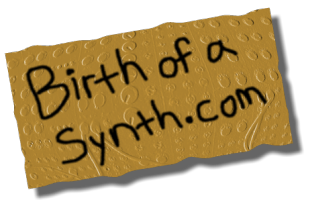Enabling The dream
For a very long time, since at least my third grade year, electronic music has exerted an inexplicible pull upon my psyche. I can only imagine, judging by the fact that you are here at this site and reading this text, you must also possess to some degree that same characteristic. Though it has been around, in one form or another for over a hundred years, electronic music is the new frontier. It is a timeless entity waiting to be sampled and given form so that it may be presented within the corporeal realm of art. Your art. It is ambivalent to style, it rests in comfort equally upon the laurels of academia or within the bowels of a nightclub. It moves you to think and to feel; it conjures visions of things not possible by being possible itself. Electronic sound and, by extension, electronic music, is derived through simulation and manipulation of phenomona that have existed since the dawn of time. This site is dedicated to the effect. It is about enabling myself, and hopefully others, to dream in color.
Birth of a synth.com Site Features
My original site was created in the latter part of 2003. Originally it was called "Scott Stites Synth DIY", and it featured a page that contained something of a blog (what I called a "diary" because I'd never heard of a "blog" at that time) that chronicled my fevered experiments with hapless electronic components. I called this page "Birth of a Synth". Then, the nameless provider who shall remain nameless (PeoplePC.com) managed to totally, inexplicably, and without warning, lose control over the server that contained the site. Because I was using a horrid on-line web design program provided by the great nameless, I could no longer edit or change the contents of the site, other than determine what sound and graphics files it had available to it. So, I began a second site called "The New, Improved Scott Stites Synth DIY" and it had the "Birth of a Synth" moniker more prominently displayed on the home page. During this period, which extended from 2004 through early 2010, I was lucky enough to help prototype some Thomas Henry designs and publish articles about them to the site. During this time I also moved through several of my hare-brained designs - the Mutant Filter, The Dim C, The Klee Sequencer, the lamentedly unfinished MultiPhase, The Appendage Touch Sequencer, and other odds and ends. In early 2010, PeoplePC the unnamed provider again dropped the ball (this time temporarily) to complement my insane dropping of the ball (by sticking with them) and I was again unable to edit the site. The ability returned, but the worm had turned, so to speak. I bit the bullet and...well...here I am, learning (slowly) how to code a decent website (bear with me on that count).
But, now that I'm here, the stuff from the old New Improved Scott Stites DIY is, at this writing, fully ported over. Initially my porting over resulted in a tragic display of html wankery, and the site literally sucked if you were not using my computer and the browser on my computer to view it. I have learned my lesson and am attempting to write compliant code so that the pages are....viewable.
So, at this site is nearly everything that was at the old site (I decided to not put up the sundry circuits, which were few and overblown). I plan on expanding this site to cover several projects I have not written about. I hope to complete the MultiPhase, and add a daring new time manipulator, and perhaps write some articles on some of the techniques I use to breadboard. And, best of all, the Thomas Henry content will be here.
A Blast From My Past
Here's one that I dug up, and I don't think I've published this anywhere before. It's a composition using the Triple Wilson State Variable Voltage Controlled Filter and my Lexicon MX200 Digital Delay. The digital delay was set to near infinite repeat; therefore the synth voice gets overlayed as the piece progresses. At some point, there are so many overlays, the piece threatens to break down into sheer noise.
The voice is a couple of VCOs through the triple SVVCF, controlled by my homemade Thomas Henry keyboard. It was all recorded in one take. I guess the thing that I like the most about it is, it really doesn't sound like it was done with a modular synthesizer. Strangely, that is the type of modular synth composition that really appeals to me - the piece where you don't realize (or forget) that it is actually done with a modular synthesizer. For me, that is the primary goal of composing with a modular synthesizer. It doesn't have to sound like an "existing" instrument, bu,t at the same time, it should take you away without tapping you on the shoulder every two or three minutes saying "Look at me, I'm a modular synthesizer".

